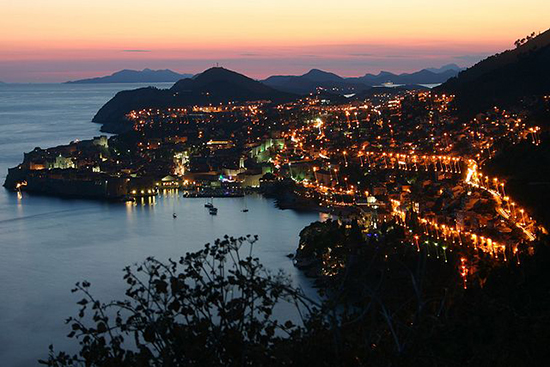One of the most important tourist points on the Adriatic Sea is Dubrovnik, the old Ragusa. Located on the coastline and at the foot of the SAN Sergio mountain in the Dalmatian region, what is modern-day Croatia today, it´s also known as the Pearl of the Adriatic and the Dalmatian Athens.
It´s a small city surrounded by walls and fortresses, which are the main attractions for visitors.

Here is a small guide of Dubrovnik´s main attractions. Each chapter will have 5 attractions, so let´s start the first one with a route around this beautiful city:
-
The walls of Dubrovnik (Dubrovačke gradske zidine):
They represent the main attraction for tourists. It was one of the main fortresses during the Middle Ages since during this period of time, what used to be the old Ragusa, was never invaded. It´s one of the best-preserved fortresses in Europe, and that´s why it was declared a World Heritage Site by UNESCO in 1979. Measuring 4600ft and 82ft in height, most of the wall shows the same aspect as it did when it was built in the 12th and 17th centuries. Forming an irregular shape, it´s made up of five fortresses: Minčeta Tower (in the north part), Revelin Fortress (east of the port), Bokar Fortress and Lovjenac Fortress (in the western part) and lastly, St John Fortress (southeast of the port).
-
Lovjenac Fortress (or St Lawrence´s Fortress):
Located on the peak of a rock that is over 120ft tall, it´s also called the Gibraltar of Dubrovnik and has a spectacular view of the sea. How to get there? Through drawbridges, in which door there´s an inscription: “NON BENE PRO TOTO LIBERTAS VENDITUR AURO” (Freedom is not for sale not for all the gold in the world). Today, the Summer Games take place there, where mostly Shakespeare plays are represented.
-
Stradun (Placa or Plathea, “platea communis”, open common space):
This street or square was built to link two small cities between the 9th and 13th century. Laus (island of the south) and Dubrava (Slavic settlement of the hill). You access it through the Pile Gate, which divides the historical centre in two parts (north and south), and that´s where all the popular festivals take place as well as being the main spot for commerce in the city.
-
The churches:
In Dubrovnik, many of the old churches are preserved, among them the baroque church of St Blaise (patron of the city), in the old town, close to the Orlando column.
It has been the cathedral of Dubrovnik since the 18th century and it´s also called the Assumption Cathedral, although there are architectonic remains inside it that go back as far as the 6th and 8th centuries. In the apsis you can visit a polyptych by Titian from 1552, ´the Assumption of the Virgin´.
-
The squares:
The best about all cities is walking around its streets and finding squares where to relax and watch the world go by. The squares are places full of life and charm that gather a lot of history and art in their configurations. In Dubrovnik, the most important one is Marin Držić square, which is the cathedral square that´s also the entry to the Karmen district.
In the next chapter, we´ll give you 5 other places to visit in Dubrovnik.
If you´re looking for apartments in Dubrovnik , you´ll discover one of the biggest and oldest museums in the open air that exist in Europe.

 English
English
